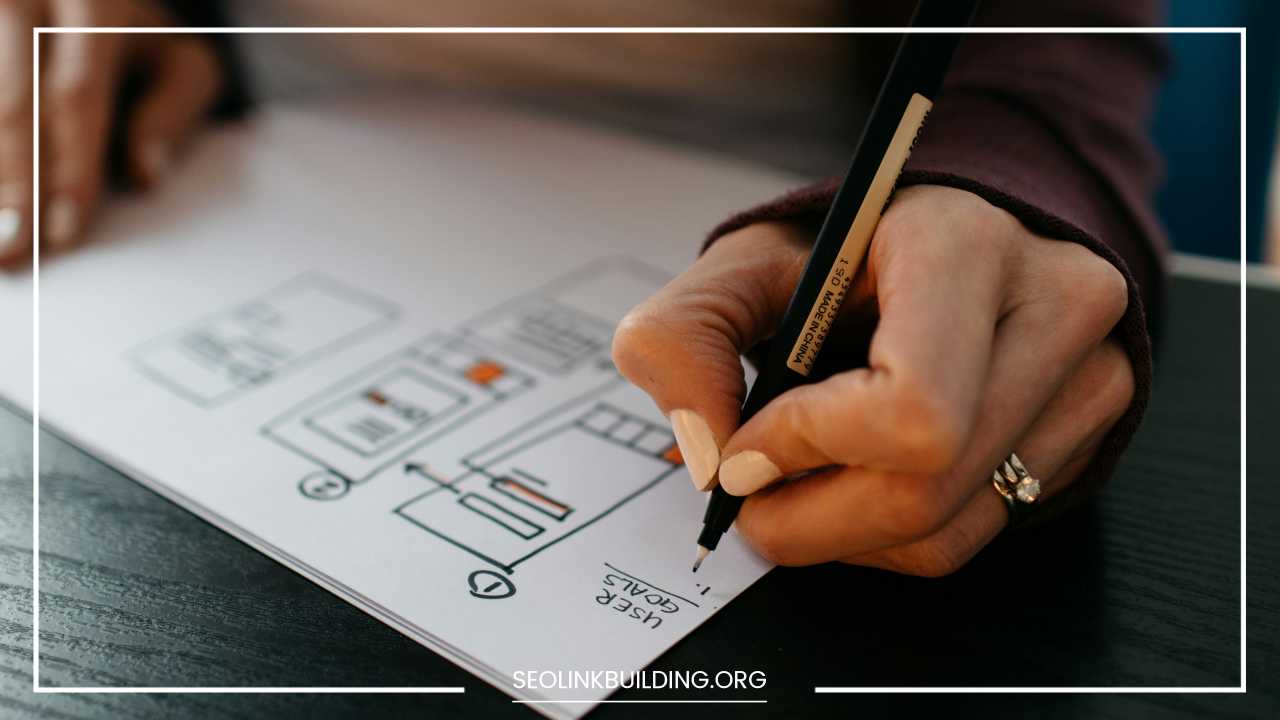Stand Out: A Guide to Unique Web Design in 2024

Unique Web Design
Standing Out From the Crowd: A Guide to Unique Web Design in 2024
In today’s saturated digital landscape, creating a website that grabs attention is more important than ever. While functionality remains crucial, a website’s design is often the first impression a visitor encounters. This is where unique web design comes into play.
What is Unique Web Design?
Unique web design goes beyond following the latest trends. It’s about crafting a website that reflects your brand’s essence and resonates with your target audience in an unexpected and memorable way.
While trends can provide inspiration, a truly unique design pushes boundaries and creates an experience that sets you apart from the competition.
Why is Unique Web Design Important?
There are several compelling reasons to invest in a unique web design:
- Brand Differentiation: A standout design sets you apart from competitors using generic templates. It visually communicates your brand identity and values, making a lasting impression.
- Enhanced User Experience (UX): Uniqueness doesn’t have to come at the expense of usability. A creative and well-planned design can improve user engagement and make it easier for visitors to find the information they need.
- Increased Brand Recognition: A website with a unique aesthetic is more likely to be remembered. When done well, it can become a talking point and contribute to positive brand association.
- Boost Conversions: A captivating design can keep visitors engaged and guide them towards taking desired actions, whether it’s making a purchase, subscribing to a newsletter, or contacting you.
Elements of Unique Web Design
There’s no one-size-fits-all approach to unique web design. However, some key elements can help you achieve a website that stands out:
- Concept and Storytelling: A strong concept forms the foundation of a unique design. Think about the message you want to convey and the emotions you want to evoke. Can you tell your brand story in a visually compelling way?
- Color Palette: Colors have a powerful psychological impact. Move beyond the expected and explore a color scheme that reflects your brand personality and resonates with your target audience.
- Typography: Fonts can elevate a design or make it fall flat. Experiment with different font styles and sizes to create a hierarchy and visual interest. But remember, readability should always be a priority.
- Visuals: High-quality and unique visuals like illustrations, photographs, and videos can grab attention and keep visitors engaged. Consider using custom-made elements for maximum impact.
- Layout and Navigation: Challenge the traditional grid-based layout and explore asymmetrical or interactive layouts. However, prioritize user-friendliness. Ensure clear and intuitive navigation that allows visitors to find what they’re looking for easily.
- Microinteractions: Subtle animations and interactive elements can add a layer of polish and delight to your website. Use them strategically to enhance user experience and guide visitors through your content.
- Accessibility: A unique design should be inclusive. Ensure your website meets accessibility standards to provide a positive experience for everyone.
Examples of Unique Web Design in Action
Here are some inspiring examples of websites that utilize unique design elements to great effect:
- Apple: https://www.apple.com/ Apple’s website is known for its clean minimalism and stunning product photography.
- Google Doodles: https://news.google.com/ Google’s interactive Doodles showcase creativity and celebrate diverse themes and people.
- Netflix: https://www.netflix.com/ Netflix uses dynamic visuals and animations to create an immersive and engaging user experience.
- The Mill: https://themill.com/contact/ This creative agency’s website showcases a playful and interactive design that reflects their innovative spirit.
Crafting Your Unique Web Design
Ready to create a website that stands out? Here’s a roadmap to get you started:
- Define Your Brand Identity: A strong brand identity is the foundation for a unique design. What are your brand values and personality traits?
- Know Your Audience: Understanding your target audience helps tailor your design to resonate with their preferences and expectations.
- Find Inspiration: Explore award-winning websites, design blogs, and online communities like Dribbble https://dribbble.com/ to gather inspiration. However, avoid copying directly and focus on finding elements that align with your brand.
- Sketch and Prototype: Before diving into code, brainstorm ideas and explore different design layouts with sketches and prototypes.
- Test and Refine: Gather feedback from potential users and iterate on your design to ensure a user-friendly experience.
- Work with a Professional: If you don’t have design expertise, consider collaborating with a web designer or agency who can translate your vision into a reality and ensure your website is technically sound.
Staying Ahead of the Curve: Trends in Unique Web Design
The digital landscape is constantly evolving, so it’s important to stay informed about emerging trends in unique web design. Here are a few exciting developments to keep on your radar:
- Micro-Animations and Motion Design: Subtle animations can add a touch of personality and guide users through your website. Expect to see even more creative and sophisticated uses of animation in the future.
- Interactive Storytelling: Engaging storytelling techniques like interactive elements, quizzes, and personalized content can keep visitors hooked and create a more immersive experience.
- Voice User Interface (VUI): Voice-activated interfaces are becoming increasingly popular. Consider incorporating VUI elements to cater to users who prefer voice search and navigation.
- Augmented Reality (AR) and Virtual Reality (VR): While still in their early stages, AR and VR have the potential to revolutionize web design by creating interactive and immersive user experiences.
- Focus on Sustainability: Consumers are becoming more eco-conscious. Consider using eco-friendly website practices like code optimization and energy-efficient hosting to showcase your commitment to sustainability.
Deep Dive into Unique Web Design: Microinteractions, VUI, Case Studies & Accessibility
A Detailed Look at Microinteractions:
Microinteractions are subtle animations or interactions that enhance user experience on a website. They can be visual, like a button that changes color on hover, or functional, like a progress bar that indicates loading time. Effective microinteractions are:
- Purposeful: They serve a clear function, guiding users through the website or providing feedback on actions.
- Delightful: They add a touch of personality and make the user experience more enjoyable.
- Subtle: They shouldn’t overwhelm the user or distract from the main content.
Here are some examples of microinteractions and their applications:
- Accordion Menus: Clicking a menu item reveals nested content, saving space and improving navigation.
- Tooltips: Hovering over an element displays a brief explanation, enhancing user understanding.
- Parallax Scrolling: Background elements move at a different speed than foreground elements, creating a depth effect and visual interest.
- Progress Bars: Visually indicate loading times, keeping users informed and reducing perceived wait times.
- Custom Cursors: Change the cursor design to reflect user interaction or provide context-specific hints.
By strategically implementing microinteractions, you can create a more engaging and user-friendly website.
The Future of Voice User Interface (VUI) in Web Design
Voice User Interfaces (VUIs) allow users to interact with websites through voice commands. With the rise of smart speakers and virtual assistants, VUI is becoming an increasingly popular design consideration.
Here are some key aspects to consider when incorporating VUI into web design:
- Natural Language Processing (NLP): The website must understand natural language to interpret user queries and respond accurately.
- Conversational Design: Craft a conversational flow that guides users through tasks and anticipates their needs.
- Accessibility: Ensure VUI functionality complements traditional interfaces and caters to users with disabilities who may not be able to use voice commands.
Here are some potential use cases for VUI in web design:
- E-commerce: Users can search for products, add items to carts, and complete purchases using voice commands.
- Content Navigation: Visitors can navigate menus, access specific website sections, or play audio/video content hands-free.
- Customer Support: VUIs can power chatbots or virtual assistants to answer basic customer queries and troubleshoot issues.
As VUI technology continues to evolve, it has the potential to revolutionize the way users interact with websites, offering a more intuitive and convenient experience.
A Case Study on a Unique Website:
To understand the power of unique design in action, let’s analyze a specific website known for its innovative approach.
Here are some aspects to consider for a case study:
- Website Selection: Choose a website that pushes boundaries in terms of design elements, user experience, or storytelling.
- Design Analysis: Break down the website’s design and identify the unique elements that contribute to its success. This could include layout choices, color palettes, interactive features, or use of multimedia.
- Impact on User Experience: Analyze how the unique design elements enhance user engagement, information recall, or brand perception.
- Business Goals: Discuss how the website’s design aligns with the business’s goals, such as increased brand awareness, lead generation, or improved customer conversions.
By dissecting a successful example of unique web design, you can gain valuable insights and inspiration for your own projects.
Accessibility Best Practices for Unique Design:
A website can be unique and visually appealing while still being accessible to everyone. Here are some key accessibility best practices to consider:
- WCAG Compliance: Strive to meet Web Content Accessibility Guidelines (WCAG) standards to ensure your website is usable by people with disabilities.
- Keyboard Navigation: Ensure all website features can be accessed and interacted with using the keyboard alone, catering to users with mobility impairments.
- Alternative Text (Alt Text): Provide clear and descriptive alt text for all images, allowing screen readers to convey the image content to visually impaired users.
- Color Contrast: Maintain sufficient color contrast between text and background elements to ensure readability for users with visual impairments.
- Clear and Simple Language: Use clear and concise language throughout the website to improve comprehension for users with cognitive disabilities.
By following accessibility best practices, you can create a unique website that is inclusive and caters to a wider audience.
By incorporating microinteractions, considering VUI implementation, analyzing case studies, and prioritizing accessibility, you can craft a website that stands out, engages users, and achieves
Final Word: The Power of Unique Web Design
In today’s competitive online environment, a unique web design is no longer a luxury, it’s a necessity. By investing in a website that reflects your brand identity and resonates with your target audience, you can stand out from the crowd, capture attention, and achieve your business goals.
Remember: Don’t be afraid to experiment and embrace creativity. A truly unique design is one that leaves a lasting impression and sets you apart as a leader in your industry.













